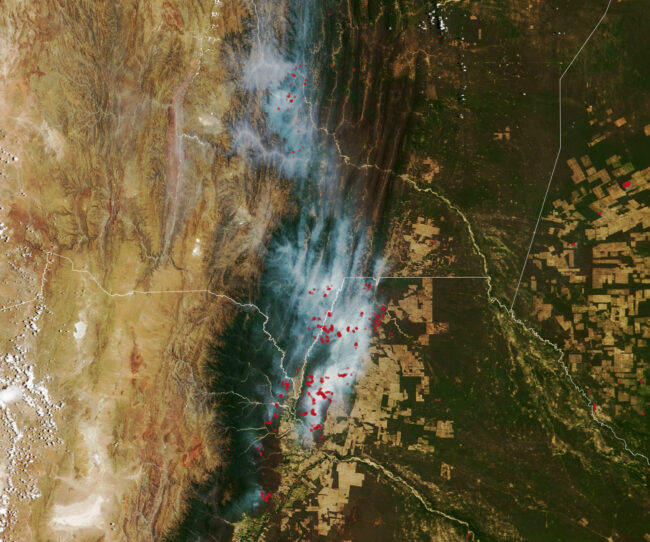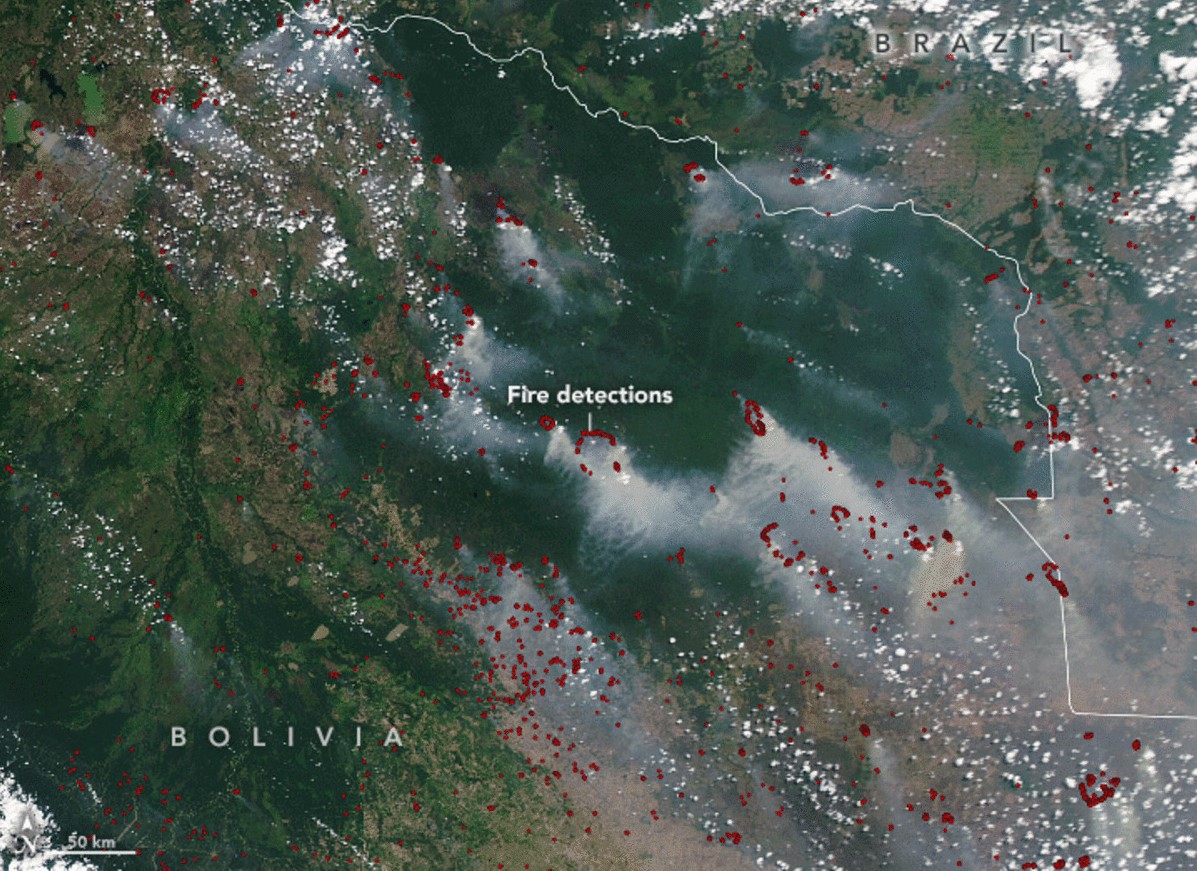Wildfires season in South America started in August and is still at full strength. While the authorities struggle to shut down the wildfires, the citizens in nearby places are fighting for air. Cities in Bolivia, Peru, Argentina, and other countries are surrounded by smoke clouds. Local authorities are advising inhabitants to wear face masks to protect their health.
Wildfires are swallowing the plantages in Bolivia
This is a major problem in La Paz, the political and cultural center of Bolivia. Here, same as in other places, nearby forest fires are connected to a protracted drought. Bolivia faces deforestation in the Yungas region too. It is northeast of the city of La Paz city and is the primary reason why hundreds of active fires devastate coca, citrus, and banana plantations.
Citizens of La Paz say that clean air is rare or unthinkable since the fires started. The smoke does not let them breathe. In this landlocked Andean nation, NASA satellite photographs reveal extraordinary forest fires.
Prolonged dryness, delayed rains, and illegal deforestation – main reason for wildfires
According to meteorologists, the flames are a result of prolonged dryness, delayed rains, and mostly illegal deforestation for obtaining farmland. The director of the Laboratory for Atmospheric Physics, Marcos Andrade, confirms this. He says the fires are mostly caused by burning plant biomass. And it is done to clear land for farming.
Bolivia appears to be covered in smoke on satellite pictures, especially in the lowlands. However, it’s not just in Bolivia. Deforestation is a regional issue because it also occurs in Peru and Argentina.
The whole Andean area is in fires
Farmers in the Andean area have been pleading for rain, as a third consecutive La Niña weather pattern has resulted in drier conditions that have wreaked havoc on crops.
According to meteorologist Marison Portucal, the lack of regular circulation patterns is to blame for the delay in rainfall. The meteorologist explains that this Bolivia region has mechanisms that transport a significant amount of moisture from the Amazon. But currently, these systems are missing from the surrounding landscape.
Burning was also visible in Argentina’s northwest in late November 2022. The country is three months into the so-called fire season.
NASA satelite images confirm the amount of wildfires
NASA’s Terra satellite captured the amount of land caught in fires using the Moderate Resolution Imaging Spectroradiometer (MODIS). MODIS system detects smoke from wildland fires. The Visible Infrared Imaging Radiometer Suite (VIIRS) also detected active fires in multiple spots.

Most of the fires visible in NASA satellite pictures are in the Salta province of Argentina. Some also appear in the provinces of Jujuy to the south and Bolivia to the north.
At Argentina’s National Institute of Agricultural Technology (INTA), Flavio Speranza, a forestry engineer, reported that the fires were raging over several wooded habitats. It includes subtropical woods at low and moderate altitudes and premontane and montane forests on mountain slopes.
Human activity is to blame too
The forestry engineer said that human activity is to blame for nearly all wildland fires in the area. People frequently build fires to keep pastures and roads in good condition. Also, people get rid of home and yard waste by setting fires. Some fires occur due to negligence while on hunting and fishing trips.
According to Global Forest Watch, between 2001 and 2021, a fire caused the loss of tree cover on 535,000 hectares of land in Argentina. That represents 8.5 percent of the overall loss of tree cover throughout that time period.
La Niña brought the drought
The Argentinian forestry engineer Speranza also says that a protracted stretch of extremely warm, dry weather has contributed to an increase in fire activity in Argentina. La Niña, which has shown for the third consecutive year, is another potential cause. Argentina and other parts of South America may experience dry conditions when there are La Niña occurrences. This is because clouds and rainfall become more erratic over the central and eastern Pacific Oceans.
The August-starting fire season usually finishes in January. However, the precise end date depends on the frequency and amount of rain. Argentina, the same as Bolivia, experienced the highest number of fires in the first two months of 2021–2022, a La Niña year. The loses are immense.

